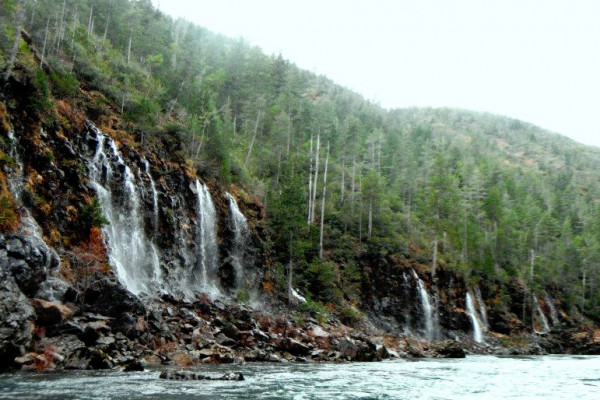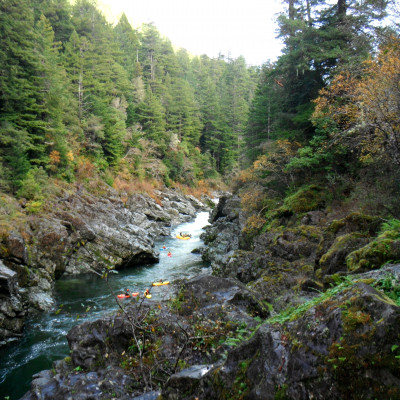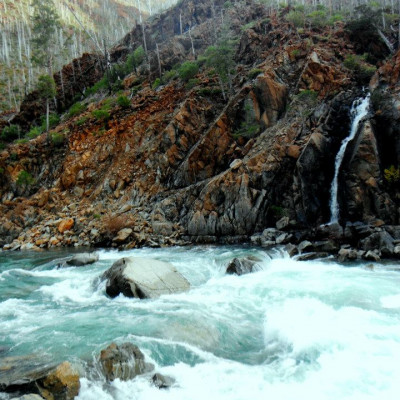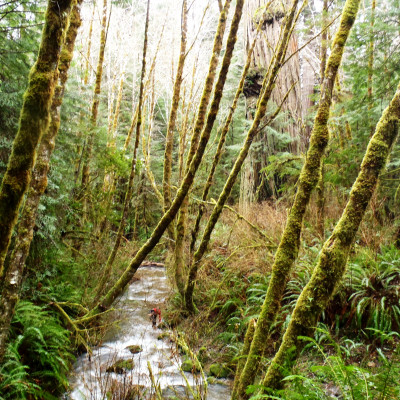River Stats:
- Location: Northern-most river in California
- Length: About 25 miles, however the Middle, North and South Fork are of about equal size, encompassing 720 square miles.
Other Native fish:
- Coast Range Sculpin
- Prickly Sculpin
- Klamath small-scale sucker
- Small numbers of summer steelhead and spring chinook
- Other fish that occur in the Smith are green sturgeon, white sturgeon, brook lamprey, Pacific lamprey, American shad, and occasionally chum salmon
Extirpated fish:
- Spring Chinook. Rumor has it, before hydraulic mining, the Smith was so deep it stayed cool enough in the summer to support a Spring run of Chinook
Threats:
- Mining- current mining operations including aggregate mining and chromium mining, and proposed nickel mining in the North Fork headwaters.
- Hatchery programs for Chinook and Steelhead
- Pesticide runoff into the lower river and estuary from lily bulb farming
About the River:
From The Nature Conservancy California Salmon Snapshots: “The Smith River is a large watershed encompassing nearly 720 square miles, including about 630 in Del Norte County and the remaining in southern Oregon. The river flows into the Pacific Ocean just four miles south of the California/Oregon border. The five main tributaries of the river are Rowdy Creek, Mill Creek, and the North Fork, South Fork, and Middle Fork of the Smith River. The large, free-flowing river—without a single dam along its mainstem—makes it especially prized among conservationists and is considered one of the crown jewels of the National Wild and Scenic River program. Over 80% over the watershed is owned and managed by federal agencies. Dominant land uses are agriculture, timber harvest, and recreation, particularly within the Smith River National Recreation Area.”
California’s only major un-dammed river system, the Wild and Scenic Smith is truly wild and untamed. It drains very unique and rugged Siskiyou and Klamath Mountains, the oldest and wildest temperate ecosystems and North America. It can boast impressive runs of steelhead and Chinook, and is a stronghold for the endangered Southern Oregon-Northern California population of Coho salmon. A mostly rain and spring-fed river, with some snow-melt in the spring, the Smith has a very “flashy” hydrograph, often changing from 2,000 cfs to 50,000 cfs in just days. However, the rocky and wild nature of the Smith allows it to return to its crystal-clear state just as quickly.
Wild, Native Fish:
The Smith is known for its historically impressive runs of Chinook and Steelhead, and although neither are listed as threatened, recent declines in population numbers are of concern. No wild steelhead can be harvested in the Smith. Coho salmon are state and federally listed as threatened. Coho are at risk of extinction due to land-use habits such as channel restriction, logging and farming with pesticides.
In regards to hatchery programs; “The Rowdy Creek Fish Hatchery, located at the identified dam on Rowdy Creek (see map on the “Where We Find Salmon” tab) is a supplementation hatchery intended to increase salmon populations that can be harvested through sportfishing in the Smith River. Little is known regarding hatchery influence across the entire basin. However, using existing survey methods (i.e., spawner surveys, creel, outmigrant trap, steelhead report card, Rowdy Creek weir) between years 1981 and 2013, average observed stray rates can be reported for subbasins of the Smith River. For Chinook salmon, the percentage of returning fish that are hatchery fish is estimated at 25% in Rowdy Creek, 14% below the forks, and 6% above the forks (see map for location of forks). For steelhead, the percentage of returning fish that are hatchery fish is estimated at 34% in Rowdy Creek, 26% below the forks, and 17% above the forks.” (Source: The Nature Conservancy California Salmon Snapshots).
Accomplishments:
Recent victories on the Smith include the denial of an application by Red Flat Nickel Mining Corp. to extract water to exploratory drill for a future open-pit nickel mine in the headwaters. In addition, large land acquisitions have restored formerly industrial timber land and large woody debris installments have improved over 1,600 acres of stream habitat for Coho, Steelhead, Chinook, Coastal Cutthroat. The Smith River population of Coho is considered to be a stronghold of the California Coho and restoration efforts are celebrated because of the collaborative work between NGOs and state and federal agencies.
Conservation Actions:
- Stop the proposal for open-pit nickel mining once and for all by permanently protecting the Smith and its headwaters from inclusion in the General Mining act of 1872.
- Stop the poisoning of the lower river and estuary from toxic chemicals in runoff from over-sprayed lily bulb farms.
- Currently, Rowdy Creek fish hatchery and weir is under review and new plans are being hatched on how to collect broodstock and manage the hatchery. Hopefully, the new plan will be a better one for wild fish.
News Articles/Links:
Kalmiopsis Rivers, “Mineral Withdrawal and the 1872 Mining Law”



